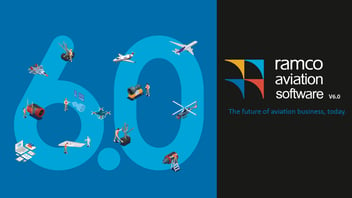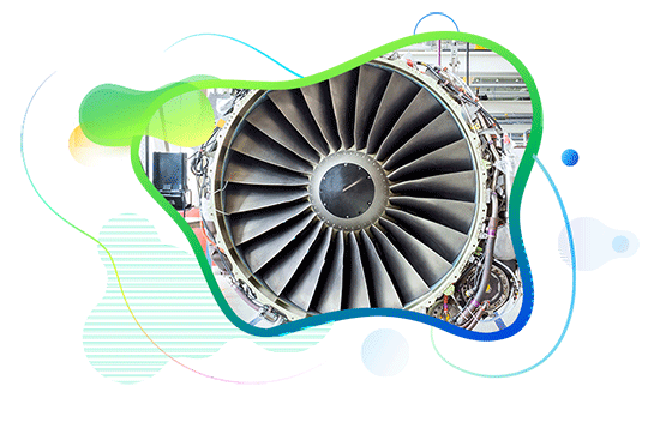
MRO M&E software implementation challenges - does one size fit all?
Published :
M&E / MRO software caters to a variety of businesses from operators (scheduled carriers - ULCCs to full service, charters, specialty operations like SAR/ EMS/off-shore, and defense to name a few), to pure play MROs (heavy airframe, line maintenance, engine and complex assembly, small to large component shops) to any combination of the above. We will look at how software vendors like Ramco cater to the unique complexities and challenges faced by each type of business.
Before we delve into the typical challenges for each type of business, let us take a look at how the multiple businesses impact software deployment. A full 'traditional' airline may have multiple operating certificates in one or more regulatory environments, and MRO / ERO /CRO businesses catering to both internal and external customers. The extent of transactions between entities varies from almost nil (e.g. Completely independent operations on different fleet types - like regional carrier vs. Mainline) to highly transaction oriented with stock and aircraft being used across entities.
In most scenarios the airline IT department is centralized and caters to all the entities. Multiple deployments of the software is not an optimum solution as this adds to the complexity of creating interfaces between entities and accounting consolidation. From the software perspective, the ability to not only support multiple entities in a single deployment, but also tailor their interactions based on actual business need becomes extremely critical.
Now let us look at specific businesses and their unique challenges. The classifications below are not exactly by a standard business segment but purely from an MRO software implementation perspective.
Operators with small fleet of large aircraft: This is typically a charter or cargo operation. Many operators have 5 or even less aircraft, however the aircraft are larger narrow body or wide body. Their requirements from an MRO software for the most part are just as complex as a larger airline flying similar aircraft. However, it may not be economical to deploy mainstream MRO software for the fleet size.
Startup airlines: One area where start-ups have a leg up on an established carrier (again talking purely with an MRO software implementation perspective) is data. With little or no history, there is not much to be migrated other than current records in case of older aircraft. However, startup airlines face the same challenges as a small fleet operator - it may be cost prohibitive to deploy mainstream MRO software. The added constraint with a typical startup airline is the cash flow (rather the lack of it) and lack of internal IT infrastructure and skill sets.
The advent of latest cloud technologies has been a great boon for both the above types of operations. MRO vendors like Ramco and others now offer the full function software - with all the functionality available to the larger airlines - over the cloud on a pure subscription model. For the end customer, this reduces both the upfront investment, and also the need for technical skillset internally to manage the day to day administrative tasks. A pure multi-tenant deployment by the MRO software also ensures that as more and more customers sign up for the software on a cloud subscription basis, the overall costs come down and can be passed down to the end customer.
New solutions create new problems! We just made a full function MRO software available to a startup airline. Given that startups are usually short staffed, and most employees wear multiple hats, a software user may now be required to perform what 5 different users would perform at a larger airline. And also given that the software was designed with a larger airline in mind in the first place, this will involve going to different parts in the application, different menus, screens, or maybe even logging in and out of different roles.
Again - technology to the rescue! Many software vendors have provided their own unique solutions to the above challenge. Ramco has introduced 'WorkSpaces' - a home screen that brings data together from various parts of the application, and intelligently routes the user to logical next steps - for example, a purchase manager may be seeing every AOG item needing his /her attention on screen, and based on the particular item selected, hyperlinks automatically route user to creating a new order, or approving an existing one, or even viewing the status of a goods receipt. The end result being the user gets a very simple and intuitive menu to work with, while the airline gets all the functions of a full MRO software behind the scenes.
"Traditional" Large airline / MRO : Enough has been said and written on implementation challenges at a typical large operation. We have already touched upon the multiple businesses aspect in the beginning. Some of the other key considerations in this type of operation are 1. What to implement? An ERP solution or a Best of Breed (BoB) MRO? 2. Managing Risk 3. Data and we will also list out some of the critical success factors in a typical large project.
ERP Solution vs. Best of Breed Solution: With any large organization running all back end processes on a large ERP solution, when the time comes for M&E / MRO software needs, there will always be the question to extend the offerings from their ERP vendor or to go for an established solution specializing in the field. There is no right or wrong answer to this question. Though this topic may best be classified as a software selection question, rather than an implementation challenge, still affects the product implementation significantly, including integrations, upgrades and various other regulatory requirements.
The case for using the ERP solution across the board including maintenance organization is that the entire organization is on one vendor platform, and there are fewer interrogations between systems. The single platform provides better controls from an accounting standpoint. In the case of a best of breed system, one is guaranteed industry specific functionality that is constantly upgraded based on the latest regulatory requirements. An often overlooked factor when using a core ERP solution for maintenance and even related functions like supply chain is the fact that many of the complexities in this industry are not just within the maintenance organization, but go right through supply chain and accounting - for example, tracking cores through repairs, exchanges, loans and borrows is just one case where a traditional supply chain software will require adjustments both in tracking the transaction and in the accounting of the transaction.
There are two approaches that large organizations have taken to combine the best of both worlds. Many MRO software have come of age and evolved over time to take on a lot of the accounting and supply chain complexities internally. This greatly simplifies the integration with the back-end ERP for accounting and on-going maintenance of the interface through each product upgrade cycles. Vendors like Ramco who have core ERP offerings besides the Aviation M&E/MRO suite offer a full end to end integrated platform from where the customer can pick and choose the extend of functions performed within the MRO software and the level of integration to a back-end ERP, or even choose to replace the entire ERP software itself as some of the recent larger customers of Ramco have done. The other end of the spectrum is to extend the ERP all through the maintenance operation, and use internal IT to provide extensions to manage the end user complexity. So maintenance gets custom interfaces and transactions that they are familiar with, and the back-end is managed with the core ERP. Needless to say, this involves a lot of custom work and internal IT expertise.
Managing Risk: Risk management is a key part of any large software deployment. Some of the options that have been used to manage risk (and again, this is not limited to the specific type of operation we are discussing here) include; phasing the software deployment, introducing a proof of concept and pilot stage, and upgrading point solutions.
Data Migration: Data migration usually becomes the largest activity within any large project especially with a lot of historical data migration. Factors to be considered here include:
The above factors will add a lot of variability to the project. A common approach has been to migrate all the opening balances and master records needed to start up the new system, keep the current system for any history reviews and have a separate project for either moving or migrating the historical data to the new system.
Critical Success Factors: As mentioned earlier, this is a topic that has been well discussed with enough articles and presentations available. We will just enumerate some of the key factors here before continuing on with specific business challenges.
In all the above MRO scenarios, optimization engines like Ramco APO can be used to provide an interface for day to day prioritization, optimizing the overall plan based on various targets like turn-times, penalty factors, cost reduction etc. considering constraints like tooling, labor, parts, capacity and due dates. The same factors have to be used as the cornerstone during project implementation to shape how the 'to-be' process is designed to best meet the goals of the MRO.
To summarize:
As we go through the different types of businesses here, it is obvious that the businesses and priorities are vastly different based on the types of operation. Choosing the best approach is tied to the specific business requirements of each customer. MRO Software vendors provide different options to tailor their software for each type of business. Some offer specific versions like a 'light' or full function software, and some have MRO vs operator type deployment. Others focus on just specific segments of the business. It is a no mean task for any business to evaluate and assess the correct software for their needs and decide on the optimum approach to implement the same.

All Rights Reserved. © Copyright 2024. Ramco Systems.